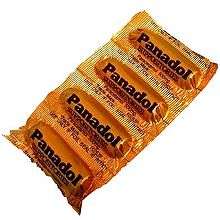Suppository
A suppository is a solid dosage form that is inserted into the rectum (rectal suppository), vagina (vaginal suppository) or urethra (urethral suppository), where it dissolves or melts and exerts local or systemic effects. They are used to deliver both systemically and locally acting medications.
Composition
Several different ingredients can be used to form the base of a suppository: cocoa butter or a similar substitute, polyethylene glycol, hydrogels and glycerinated gelatin. The type of material used depends on the type of suppository, the type of drug and the conditions in which the suppository will be stored.[1]
Rectal suppositories
In 1991, Abd-El-Maeboud and his colleagues conducted a study on suppository insertion in The Lancet,[2] explaining that the "torpedo" shape helps the device to travel internally, increasing its efficacy. The findings of this single study have been challenged as there is insufficient evidence on which to base clinical practice.[3]

Urethral suppositories
Alprostadil pellets are urethral suppositories used for the treatment of severe erectile dysfunction. They are marketed under the name Muse in the United States.[4] Its use has diminished since the development of oral impotence medications.
See also
| Wikimedia Commons has media related to: |
Notes
- ↑ Troy, David B.; Beringer, Paul (2006). Remington: The Science and Practice of Pharmacy. Lippincott Williams & Wilkins. pp. 884–885.
- ↑ Abd-El-Maeboud, K. H.; T. El-Naggar; E. M. M. El-Hawi; S. A. R. Mahmoud; S. Abd-El-Hay (28 September 1991). "Rectal suppository: commonsense and mode of insertion". The Lancet. Elsevier Science. 338 (8770): 798–800. doi:10.1016/0140-6736(91)90676-G. PMID 1681170.
- ↑ Bradshaw, Ann; Lynda Price (20 December 2006). "Rectal suppository insertion: the reliability of the evidence as a basis for nursing practice". Journal of Clinical Nursing. Blackwell Publishing. 16 (1): 98–103. doi:10.1111/j.1365-2702.2005.01519.x. PMID 17181671.
- ↑ "Muse Suppository - Facts and Comparisons". Drugs.com. Retrieved 4 January 2013.
References
- Doyle, D., "Per Rectum: A History of Enemata", Journal of the Royal College of Physicians of Edinburgh, Vol.35, No.4, (December 2005), pp. 367–370.
- Payer, L., "How Medical Practice Reflects National Culture", The Sciences, Vol.30, No.4, (July–August 1990), pp. 38–42.

-solution.jpg)


